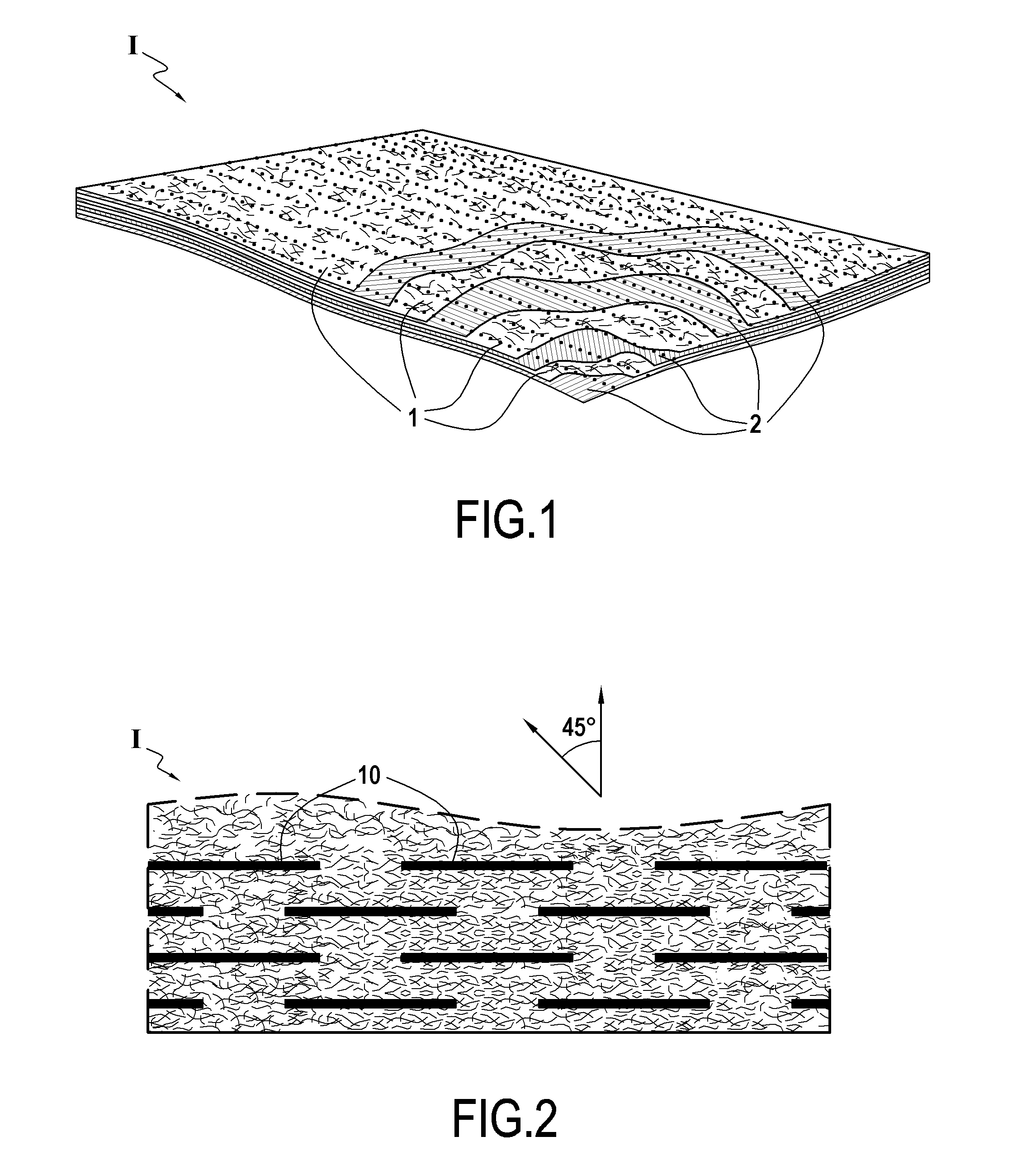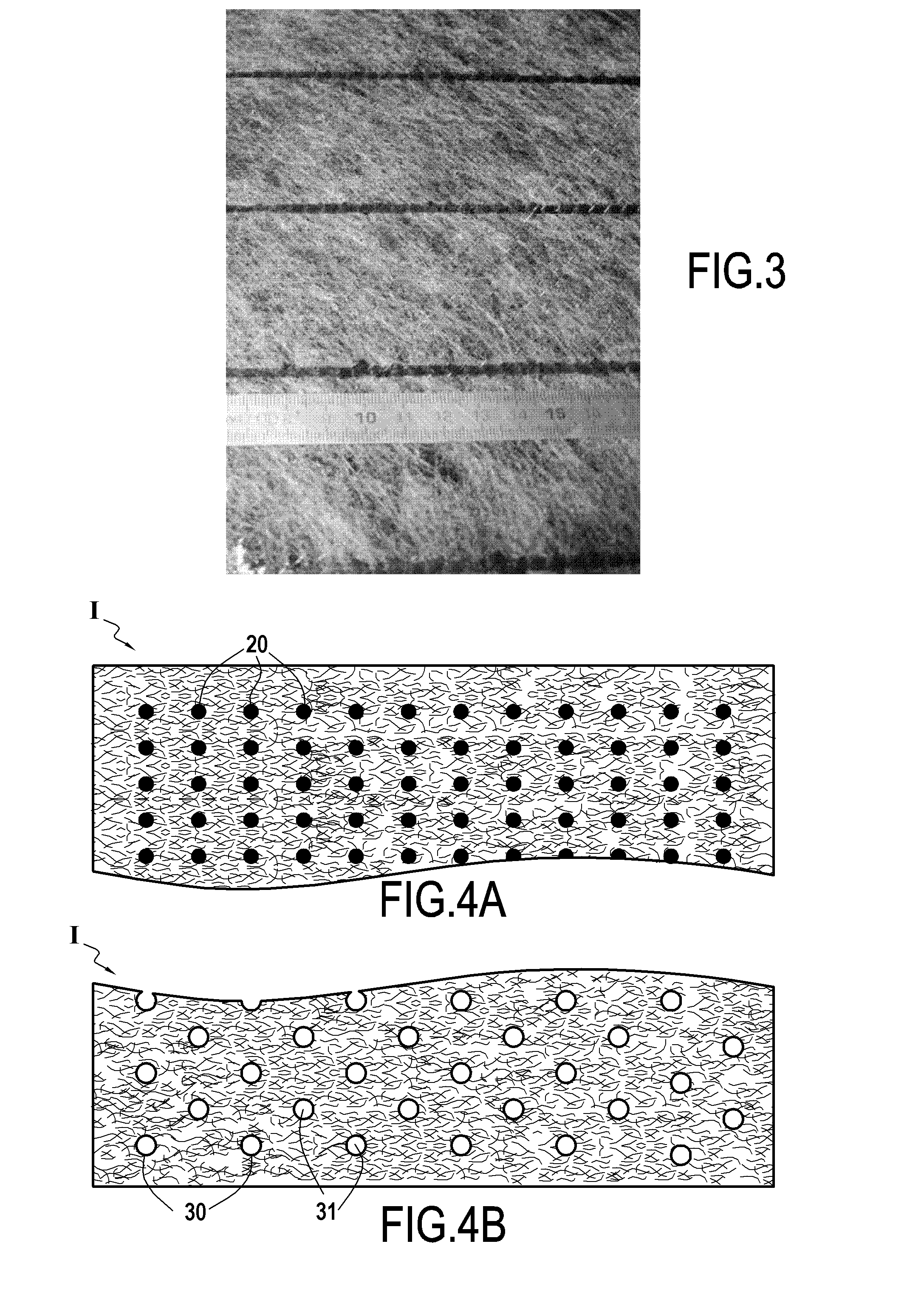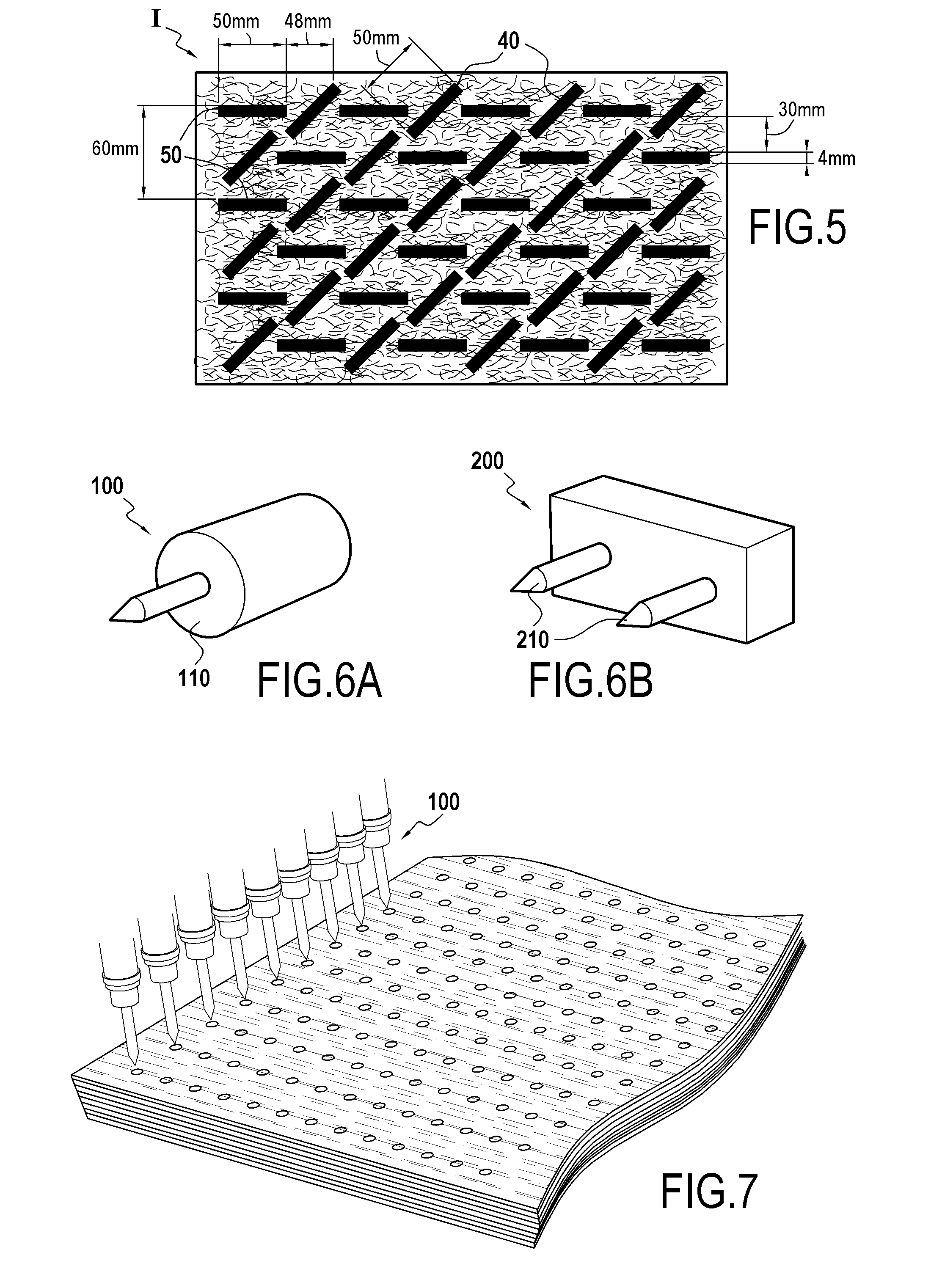Multiaxial Stack Rigidly Connected By Means Of Weld Points Applied By Means Of Inserted Thermoplastic Webs
a multi-axial stack and weld point technology, applied in the field of reinforcement materials, can solve the problems of poor impact resistance of fabricated composite parts, and achieve good mechanical properties
- Summary
- Abstract
- Description
- Claims
- Application Information
AI Technical Summary
Benefits of technology
Problems solved by technology
Method used
Image
Examples
example 1
Line-Welded Quasi-Isotropic Multiaxial
[0064]The following stack is created in-line on a multiaxial manufacturing machine: a unidirectional layer of carbon fibers oriented at 45°, a web, a unidirectional layer of carbon fibers oriented at 135°, a web.
[0065]The unidirectional layers of carbon fibers are fabricated in-line and their carbon fiber grammage is estimated at 268 g / m2±3%, using Hexcel HR fibers whose properties are given in Table 1.
TABLE 1Characteristic properties of carbon fibersHexcel HRStress rupture (MPa)4830Tensile modulus (GPa)241Elongation (%)1.8Weight / unit length (g / m)0.785Volume density (g / cm3)1.79Filament diameter (μm)8
[0066]Webs of short fibers based on polyamides are used.
[0067]The characteristics of the webs used are given in Table 2. The melting point indicated in Table 2 is determined by differential scanning calorimetry (DSC) according to the ISO 11357-3 standard. The surface density is measured according to the ISO 3801 standard. The porosity factor shown in...
example 2
Point-Welded Perforated Quasi-Isotropic Multiaxial (4 Plies)
[0074]The stack shown in FIG. 1 is fabricated in-line on a multiaxial production machine: a unidirectional layer of carbon fibers oriented at 45°, a web, a unidirectional layer of carbon fibers oriented at 0°, a web, a unidirectional layer of carbon fibers oriented at 135°, a web, a unidirectional layer of carbon fibers oriented at 90° and a web.
[0075]The unidirectional layers of carbon fibers are created in-line with a carbon fiber grammage estimated at 194 g / m2±3%, using Hexcel IM fibers whose properties are given in Table 5.
TABLE 5Characteristic properties of carbon fibersHexcel IMStress rupture (MPa)5610Tensile modulus (GPa)297Elongation (%)1.9Weight / unit length (g / m)0.443Volume density (g / cm3)1.80Filament diameter (μm)5
[0076]The webs are identical to those used in Example 1.
[0077]Two sets of discontinuous weld lines are produced, one in a 90° orientation and another in the 135° orientation from the axis of the machine,...
PUM
| Property | Measurement | Unit |
|---|---|---|
| Thickness | aaaaa | aaaaa |
| Fraction | aaaaa | aaaaa |
| Length | aaaaa | aaaaa |
Abstract
Description
Claims
Application Information
 Login to View More
Login to View More - R&D
- Intellectual Property
- Life Sciences
- Materials
- Tech Scout
- Unparalleled Data Quality
- Higher Quality Content
- 60% Fewer Hallucinations
Browse by: Latest US Patents, China's latest patents, Technical Efficacy Thesaurus, Application Domain, Technology Topic, Popular Technical Reports.
© 2025 PatSnap. All rights reserved.Legal|Privacy policy|Modern Slavery Act Transparency Statement|Sitemap|About US| Contact US: help@patsnap.com



